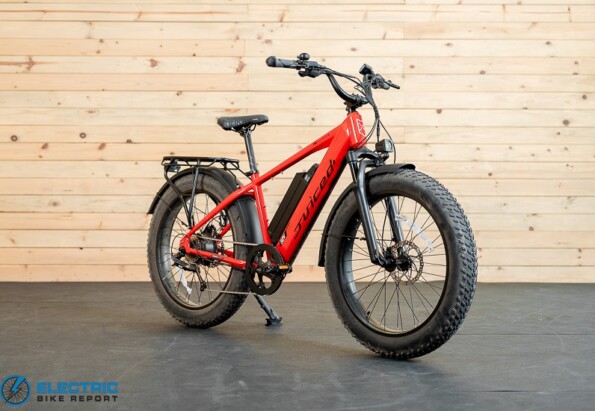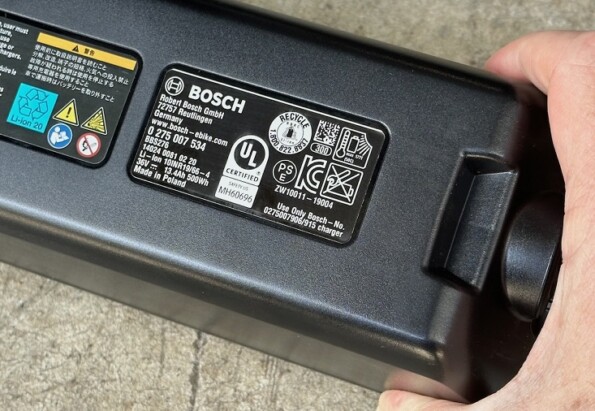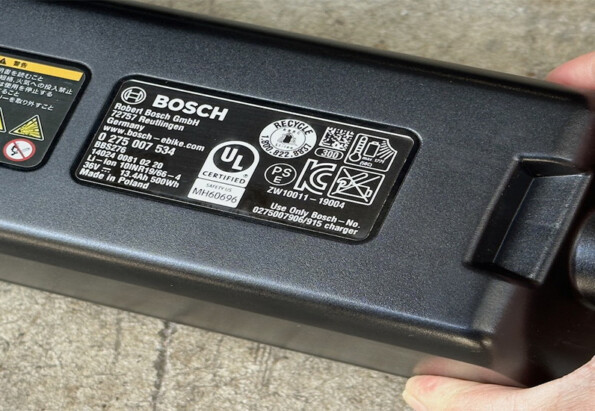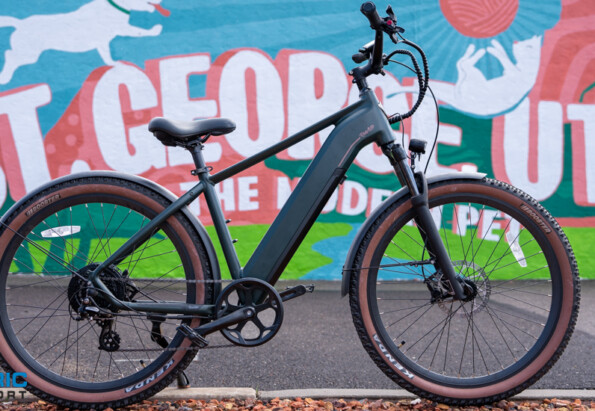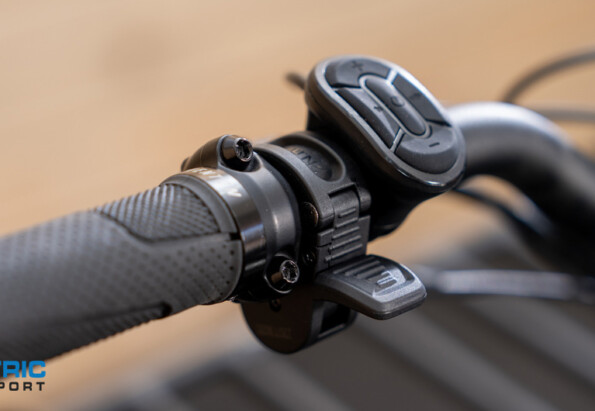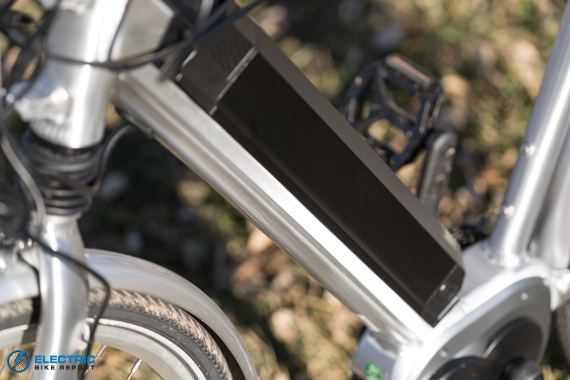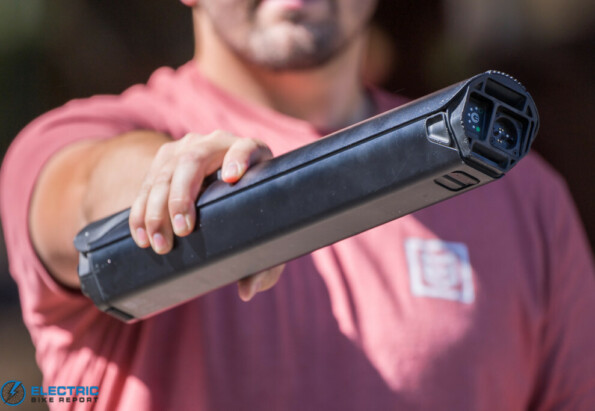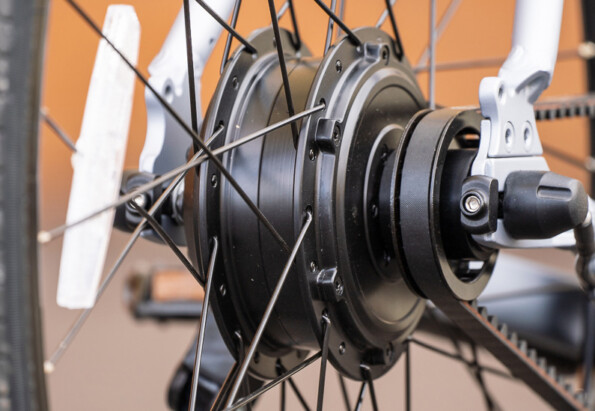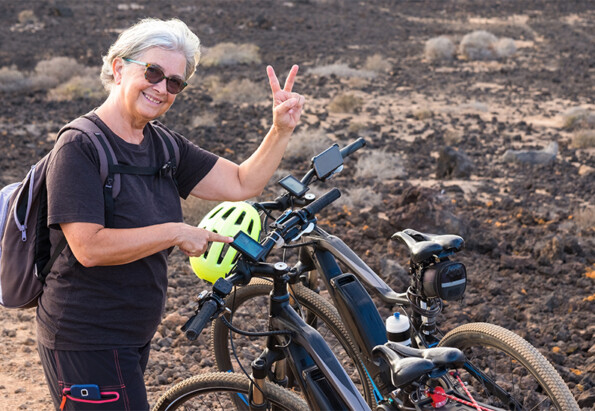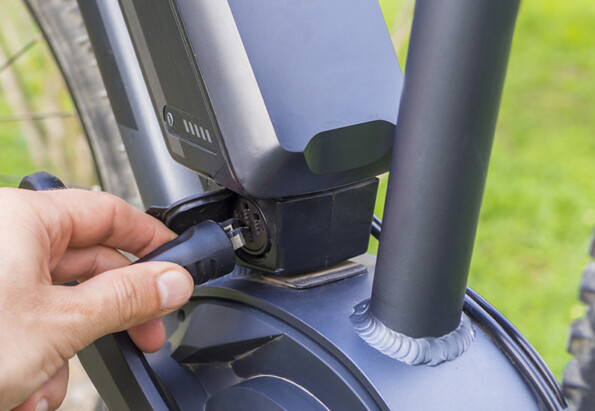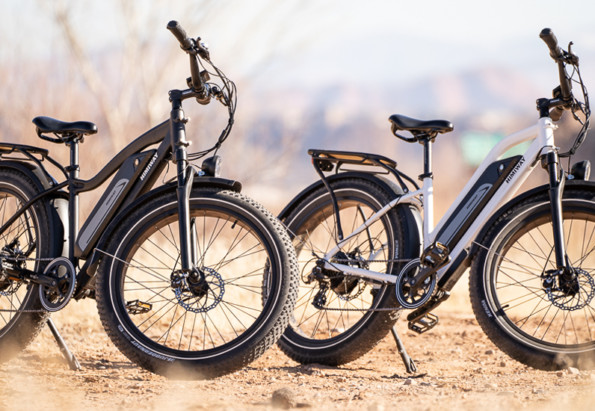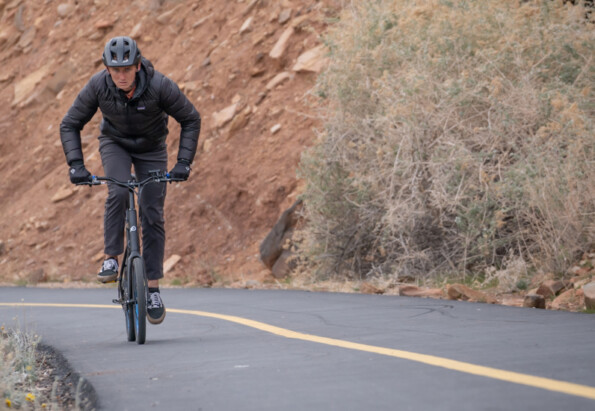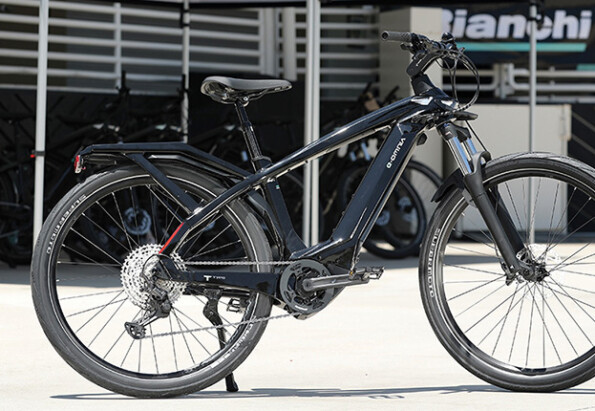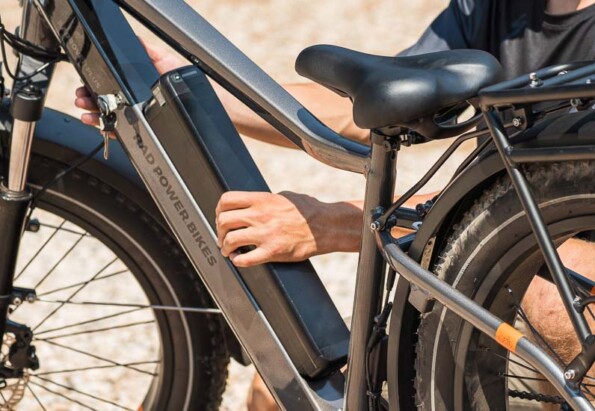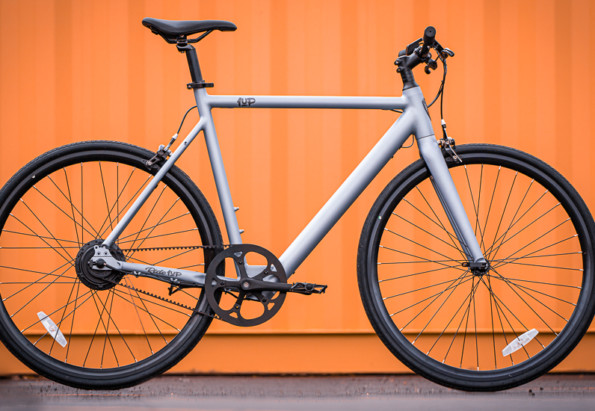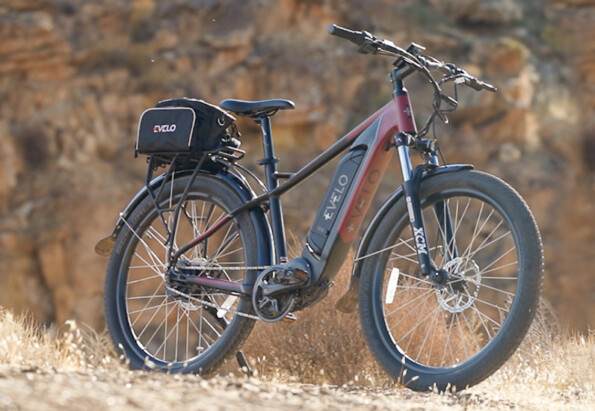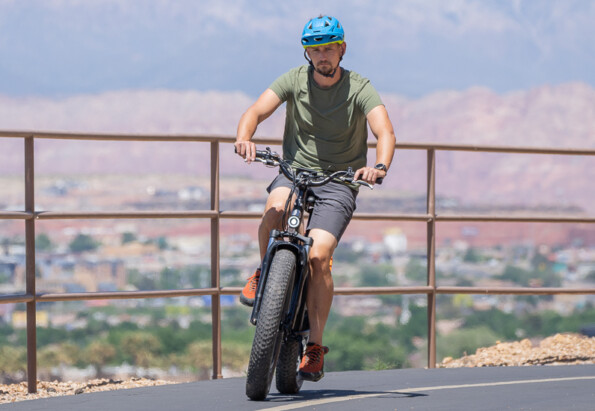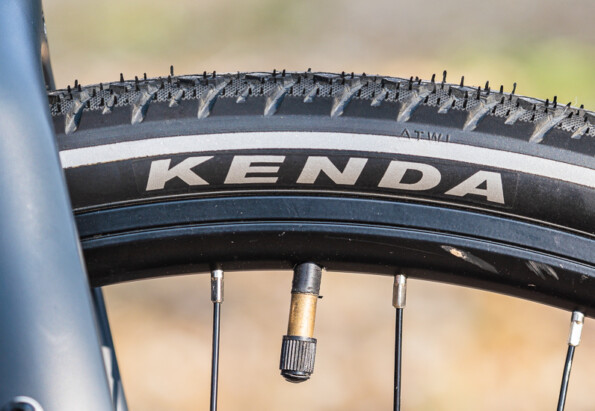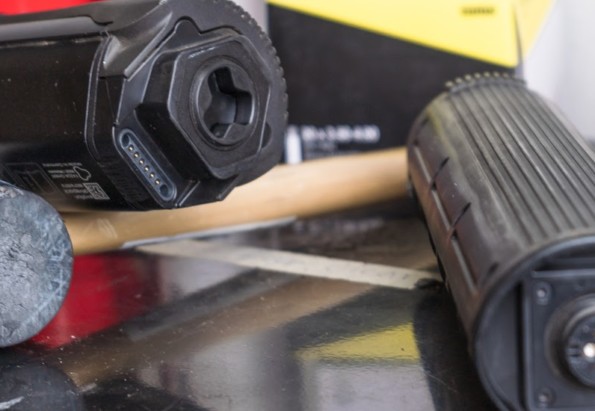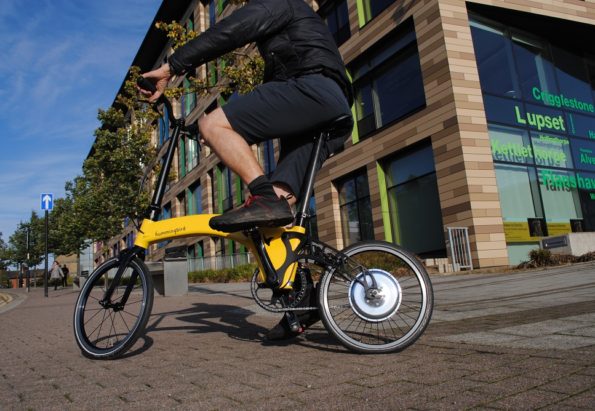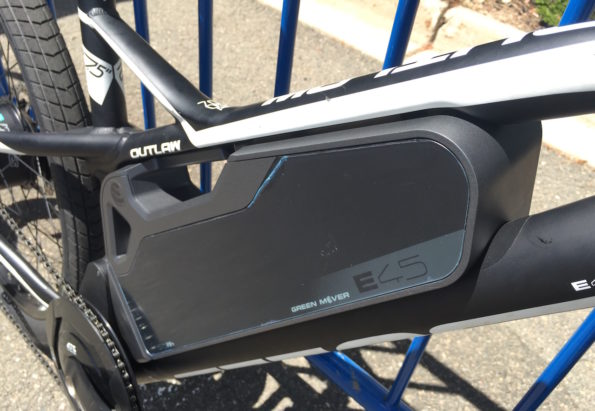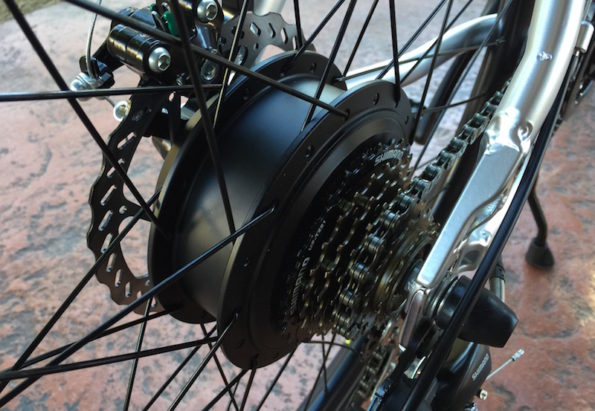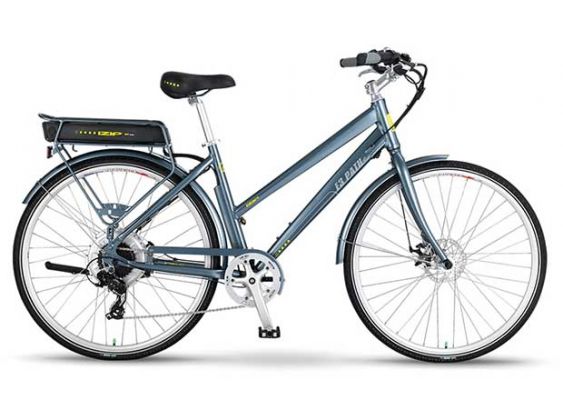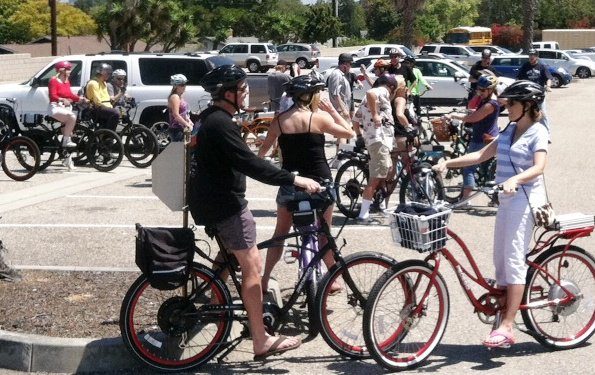Electric Bike Reviews, News, & Testing
Electric Bike Report
Menu
- Electric Bike News
- Electric Bike Reviews
- Black Friday E-bike Deals | Cyber Monday Sales 2024
- Best Electric Bikes by Type
- Best Overall Electric Bikes
- Best Cruiser Electric Bikes
- Best Cheap (Budget) Electric Bikes
- Best Electric Bikes Under $1,000
- Best Electric Cargo Bikes
- Best City & Urban Electric Bikes
- Best Commuter Electric Bikes
- Best Folding Electric Bikes
- Best Fat Tire Electric Bikes
- Best Electric Bikes For Seniors
- Best Electric Bikes For Heavier Riders
- Best Electric Hunting Bikes
- Best Value E-Bikes
- Best Mid Drive Electric Bikes
- Best Moped-Styled E-Bikes
- Best Electric Bikes for Women
- Best Electric Tricycles (E-Trikes for Adults)
- Best E-Bike Repair Stands
- Best Electric Bikes For Kids
- E-Bike Reviews by Type
- Commuter E-Bike Reviews
- City / Urban E-Bike Reviews
- Multi-Use Trail E-Bike Reviews
- Affordable E-Bike Reviews
- Step-Thru E-Bike Reviews
- Folding E-Bike Reviews
- Fat Tire E-Bike Reviews
- Cargo & Utility E-Bike Reviews
- Cruiser E-Bike Reviews
- Gravel E-Bike Reviews
- Mountain E-Bike Reviews (eMTB)
- Road E-Bike Reviews
- Class 3 E-Bike Reviews
- Class 2 E-Bike Reviews
- Electric Bike Brands
- Popular E-Bikes
- Aventon Aventure.2 Review
- Aventon Level.2 Review
- Aventon Pace 500.3 Review
- Blix Sol Eclipse Review
- Electric Bike Company Model R Review
- Electric Bike Company Model S Review
- Evelo Omega Review
- Lectric XP 3.0 Review
- Lectric XP Lite Review
- Lectric XP Trike Review
- Lectric XPeak Review
- Lectric XPedition Review
- Lectric XPremium Review
- Himiway Cruiser Review
- Himiway Zebra Review
- Mokwheel Basalt Review
- QuietKat Jeep Review
- Ride1UP 700 Series Review
- Ride1UP Prodigy V2 LX Review
- Ride1UP Revv 1 Review
- Ride1UP Roadster V2 Review
- REI Co-op Cycles Generation e1.1 Review
- Rad Power Bikes RadCity 5 Plus Review
- Rad Power Bikes RadExpand Review
- Rad Power Bikes RadRover 6 Plus Review
- Rad Power Bikes RadRunner Plus Review
- Radio Flyer M880 Review
- Specialized Globe Haul ST Review
- Specialized Turbo Como Review
- Specialized Turbo Vado Review
- Tenways CGO600 Pro Review
- Velotric Discover 1 Review
- Popular Posts
- eBikes For Older Riders
- What Is The Best Budget E-Bike?
- Hub Motor Brands: The Complete Guide
- Best Car Racks For Electric Bikes – 2021
- Electric Bike Modes: Throttle vs Pedal Assist (Pedelec)
- The Complete Guide to E-Bike Mid-Drive Motors
- Calculating Range on Electric Bikes: How To Find The Long-hauler For You
- E-Bike Batteries: Volts, Amps, & Watt Hours Explained
- A Guide to E-Bike Locks and Security Ratings
- Why You Don’t Want a Superfast Electric Bicycle
- Understanding the Differences Between Direct Drive & Geared Electric Bike Hub Motors
- Understanding the Differences Between Direct Drive & Geared Electric Bike Hub Motors
- Replacement Electric Bike Batteries Guide
- Guide To E-Bike Gearing Systems
- Cargo Trailers for eBikes – The Complete Guide
- The Advantages Of A Lightweight eBike
- Cool Looking Bike Helmets …. Really?!
- Guide To Electric Bike Drivetrains
- Guide To Electric Bike Brakes
- Accessories & Parts
- Learn
- About
- Contact
- Advertise
- E-Bike Organizations & Market Reports
Sponsor8 Tips for Riding in the Rain—How to Stay Comfortable While Pedaling
April 30th, 2024Rain seems to be the litmus test for how serious a rider is. If someone tells you they rode...Sam Gross
23 Things We Want Manufacturers to STOP Doing On E-Bikes
April 8th, 2024As e-bike reviewers for Electric Bike Report, my fellow office-mates and I have the extreme joy and privilege of...John S. Bozick
Why Ride A Fat Tire E-Bike?
March 24th, 2024So let’s say you’re in the market for an e-bike, whether it’s your first, or your next, and you’re...Patrick Brady
What Are the Different Types of Certifications for E-Bikes?
March 8th, 2024E-bike certification has become a point of conversation with e-bikes in the last year, due, in large part, to...Patrick Brady
Can You Fly With An Electric Bike?
March 5th, 2024An e-bike is a great way to see a place and get around, whether on vacation or a business...Patrick Brady
Should E-bikes Have UL-Certified Batteries?
August 31st, 2023If this seems a strange question to ask, you’re not alone. Most of the electrical products in our homes...Patrick Brady
Torque Sensors vs. Cadence Sensors on Electric Bikes
August 29th, 2023In order for an e-bike motor to know when to turn on or off, it must receive a signal...Patrick Brady
3 E-Bike Safety Tips When Riding
July 24th, 2023*We receive a lot of requests to write for Electric Bike Report. We don’t typically let others write content...Griffin Hales
What Are IP Ratings and Why Do They Matter for E-Bikes
July 19th, 2023There are few things where water and dirt make things better. Mud pies, yes. Mountain bike trails, yes. Coffee...Patrick Brady
Electric Bike Modes: Throttle vs Pedal Assist (Pedelec)
March 22nd, 2023In this article you will learn about the different throttle types (twist grip, thumb, push button), pedal assist types...John S. Bozick
Replacement Electric Bike Batteries Guide
February 23rd, 2023Eventually electric bike batteries need to be replaced as their lifecycle comes to an end. You can tell when...Richard Peace
E-Bike Batteries: Volts, Amps, & Watt Hours Explained
February 12th, 2023What Are These Volts, Amps, and Watt-Hours? How Battery Specifications and Capacity Equate to Capability and Cost Understanding e-bike...John S. Bozick
How ElectricBikeReport.com Generates Revenue and Pays Its Team Members
January 1st, 2023We get a lot of questions from our readers, like: Are your reviews paid for? How do you make...Michael Clark
Electric Bike Report’s Testing Process Explained
January 1st, 2023How We Consistently Measure E-Bike Performance Here at Electric Bike Report, it is our mission to provide detailed, honest,...John S. Bozick
Understanding the Differences Between Direct Drive & Geared Electric Bike Hub Motors
July 18th, 2022Which electric bike hub motor is best for you; direct drive or geared? Find out in this guide to...Richard Peace
Ask Electric Bike Report: Are e-bikes safe for seniors?
July 1st, 2022The team at Electric Bike Report fields a surprising number of questions on whether electric bikes are safe for...Sam Gross
How Much Does it Cost to Charge Your Electric Bike?
April 6th, 2022How much electricity does an e-bike use? The best way to answer this question is to look at the...Richard Peace
Calculating Range on Electric Bikes: How To Find The Long-hauler For You
April 2nd, 2022Long Range E-Bikes: Intro The electric bike world has plenty of sprinters, heavy lifters and high jumpers, but what...Sam Gross
Is 250W enough power for an electric bike?
March 8th, 2022Aside from speed, power is probably the hottest topic — and selling point — in the electric bike world....Sam Gross
500W vs. 750W E-Bike: Does wattage matter on hills?
February 25th, 2022Does size matter? It’s a query as old as time that, depending on who you ask and in what...Sam Gross
Why are electric bikes so expensive?
February 1st, 2022Electric bikes cost money; probably more money than the average person might expect. So why are electric bikes so...Sam Gross
How long do electric bike batteries last?
September 13th, 2021Like the battery in your car, an electric bike’s battery has a useful lifespan that only lasts so long...Sam Gross
What makes a good cheap electric bike?
September 8th, 2021Bicycles, especially electric bikes, are often more expensive than the average person might think. But not all good e-bikes...Sam Gross
Can I lose weight riding an electric bike?
September 7th, 2021Though they’re designed to make bicycling slightly easier, you definitely can lose weight riding an electric bike. At the...Sam Gross
Do you need a license to ride an electric bike?
August 25th, 2021Can you ride an electric bike without a license? In most U.S. states e-bike riders are not required to...Sam Gross
What Are The Pro’s and Con’s of Electric Bikes?
August 19th, 2021Electric bicycles seem to be popping up everywhere, and with good reason. The self-sufficiency mixed with a little help...Michael Clark
Are Kenda Electric Bike Tires Good?
August 16th, 2021A maker of bicycle tires since the early 60’s, Kenda is a common name found stamped on the sidewalls...Sam Gross
Are Electric Bikes Cheating? We Asked the CEO of Bianchi USA
July 1st, 2021Though they’ve been embraced by nearly every major bike manufacturer and have all but saturated every corner of the...Sam Gross
Bike Mechanics Should Become LEVA Tech Certified, Or Risk Being ‘Left Behind’
June 17th, 2021Why You Should Become LEVA Tech Certified E-bikes are selling like hot cakes. But are bike shops prepared to...Sam Gross
The Advantages Of A Lightweight eBike
July 21st, 2020There are numerous claims from e-bike manufacturers to have produced the lightest e-bike in the world and reports of...Richard Peace
Guide to Storing Electric Bike Batteries
July 12th, 2016By Edward Benjamin, LEVA Technician Training Program One of the problems for ebikes is this: They can spend months...Edward Benjamin
Tips on Buying Your Best Electric Bike
January 30th, 2016Are you having trouble deciding which electric bike is best for you? There are a lot of electric bikes...Pete
Electric Bike Frequently Asked Questions
January 8th, 2016Electric bikes are a relatively new type of bicycle and there are often many questions that come to mind...Pete
The New California E-Bike Law & Electric Mountain Bikes
October 29th, 2015By Morgan Lommele, E-Bikes Campaigns Manager at PeopleForBikes. On October 7, 2015, California Governor Jerry Brown signed A.B. 1096, legislation that...Michael Clark
Electric Bike Motor Comparison: Hub, Mid Drive, & Friction Drive
February 17th, 2015Here is a comparison of the different electric bike motor systems to help you determine which configuration is best...Pete
Electric Bike Battery Fires and How to Prevent Them [VIDEO]
January 22nd, 2015For a battery of any sort to catch fire is rare. For an electric bicycle battery to catch fire...Edward Benjamin
Welcome to the World of Electric Bikes
July 23rd, 2014If you are new to electric bikes then this article will help you get a quick understanding of what...Pete
Glossary of Electric Bike Terms
June 18th, 2013Enhance your electric bike education with this guide to e-bike terms! Plus, Ed Benjamin's electricity as water explanation.Edward Benjamin
Battery Care & Tips for E-Bikes & Pedelecs
June 1st, 2013A guide to the strengths & weaknesses of Lead Acid, Ni Cad, NiMh, and Lithium batteries for electric bikes,...Edward Benjamin
The Electric Bike: Conveniences of a Car with the Advantages of a Bicycle
April 19th, 2011I have been thinking of quick ways to describe what an electric bike is all about to someone that...Pete
Guides
- Understanding E-Bike Batteries: Volts, Amps, & Watt Hours Explained
- Everything You Need to Know About Electric Bike Batteries Replacement
- The Complete Guide To E-Bike Gearing Systems
- A Comprehensive Guide to Electric Bike Brakes
- The Difference Between Throttle & Pedal-Assist for Electric Bikes
- What Are IP Ratings and Why Do They Matter for E-Bikes
- The Ultimate Guide to Different Types of Certifications for E-bikes
Reviews
- 2024’s Best Electric Bikes Revealed: See Our Top Picks!
- Compact and Efficient: Discover the Best Folding E-Bikes on the Market
- Conquer Any Terrain: Best Fat Tire E-Bikes for Your Next Adventure
- From Groceries to Gear: Best Electric Cargo Bikes for Effortless Hauling
- Revolutionize Your Commute: The Top “Best E-bikes for Commuting” Revealed
- Cruise in Comfort: Best Electric Cruiser Bikes for a Leisurely Ride
- The Ultimate Guide to the Best E-Bikes for Older Adults
- Ditch the Car, Ride the Future: Best E-bikes for Getting Around Town
- Stability and Style: The Top 3 Wheel Electric Bikes Revealed
What’s Trending
- Unveiling the Top Hub Motor Brands Dominating the Electric Vehicle Market
- Decoded: Is 250 Watts Enough Power for Your Ebike?
- Single Speed Electric Bikes: Are They Worth It?
- Geared vs. Direct Drive: E-Bike Hub Motors Detailed Comparison
- The Top 6 Common Mistakes to Avoid When Buying an E-bike
- How Much Does it Cost to Charge An Electric Bike?
- 500W vs. 750W E-bike: Does Wattage Matter on Hills?
- Electric Bike News
- Electric Bike Reviews
- Black Friday E-bike Deals | Cyber Monday Sales 2024
- Best Electric Bikes by Type
- Best Overall Electric Bikes
- Best Cruiser Electric Bikes
- Best Cheap (Budget) Electric Bikes
- Best Electric Bikes Under $1,000
- Best Electric Cargo Bikes
- Best City & Urban Electric Bikes
- Best Commuter Electric Bikes
- Best Folding Electric Bikes
- Best Fat Tire Electric Bikes
- Best Electric Bikes For Seniors
- Best Electric Bikes For Heavier Riders
- Best Electric Hunting Bikes
- Best Value E-Bikes
- Best Mid Drive Electric Bikes
- Best Moped-Styled E-Bikes
- Best Electric Bikes for Women
- Best Electric Tricycles (E-Trikes for Adults)
- Best E-Bike Repair Stands
- Best Electric Bikes For Kids
- E-Bike Reviews by Type
- Commuter E-Bike Reviews
- City / Urban E-Bike Reviews
- Multi-Use Trail E-Bike Reviews
- Affordable E-Bike Reviews
- Step-Thru E-Bike Reviews
- Folding E-Bike Reviews
- Fat Tire E-Bike Reviews
- Cargo & Utility E-Bike Reviews
- Cruiser E-Bike Reviews
- Gravel E-Bike Reviews
- Mountain E-Bike Reviews (eMTB)
- Road E-Bike Reviews
- Class 3 E-Bike Reviews
- Class 2 E-Bike Reviews
- Electric Bike Brands
- Popular E-Bikes
- Aventon Aventure.2 Review
- Aventon Level.2 Review
- Aventon Pace 500.3 Review
- Blix Sol Eclipse Review
- Electric Bike Company Model R Review
- Electric Bike Company Model S Review
- Evelo Omega Review
- Lectric XP 3.0 Review
- Lectric XP Lite Review
- Lectric XP Trike Review
- Lectric XPeak Review
- Lectric XPedition Review
- Lectric XPremium Review
- Himiway Cruiser Review
- Himiway Zebra Review
- Mokwheel Basalt Review
- QuietKat Jeep Review
- Ride1UP 700 Series Review
- Ride1UP Prodigy V2 LX Review
- Ride1UP Revv 1 Review
- Ride1UP Roadster V2 Review
- REI Co-op Cycles Generation e1.1 Review
- Rad Power Bikes RadCity 5 Plus Review
- Rad Power Bikes RadExpand Review
- Rad Power Bikes RadRover 6 Plus Review
- Rad Power Bikes RadRunner Plus Review
- Radio Flyer M880 Review
- Specialized Globe Haul ST Review
- Specialized Turbo Como Review
- Specialized Turbo Vado Review
- Tenways CGO600 Pro Review
- Velotric Discover 1 Review
- Popular Posts
- eBikes For Older Riders
- What Is The Best Budget E-Bike?
- Hub Motor Brands: The Complete Guide
- Best Car Racks For Electric Bikes – 2021
- Electric Bike Modes: Throttle vs Pedal Assist (Pedelec)
- The Complete Guide to E-Bike Mid-Drive Motors
- Calculating Range on Electric Bikes: How To Find The Long-hauler For You
- E-Bike Batteries: Volts, Amps, & Watt Hours Explained
- A Guide to E-Bike Locks and Security Ratings
- Why You Don’t Want a Superfast Electric Bicycle
- Understanding the Differences Between Direct Drive & Geared Electric Bike Hub Motors
- Understanding the Differences Between Direct Drive & Geared Electric Bike Hub Motors
- Replacement Electric Bike Batteries Guide
- Guide To E-Bike Gearing Systems
- Cargo Trailers for eBikes – The Complete Guide
- The Advantages Of A Lightweight eBike
- Cool Looking Bike Helmets …. Really?!
- Guide To Electric Bike Drivetrains
- Guide To Electric Bike Brakes
- Accessories & Parts
- Learn
- About
- Contact
- Advertise
- E-Bike Organizations & Market Reports
-
Privacy & Cookies: This site uses cookies. By continuing to use this website, you agree to their use.
To find out more, including how to control cookies, see here: Cookie PolicyClose and accept


